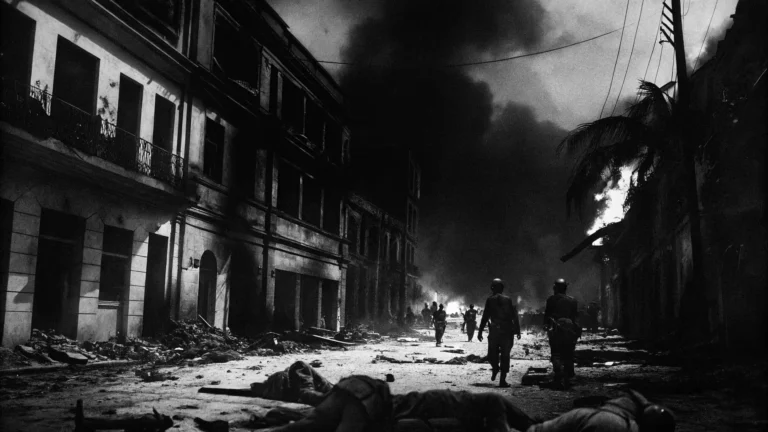Jose Garcia Villa: Pioneer of Modernist Poetry

Jose Garcia Villa is recognized as a pioneer of modernist poetry in the Philippines, known for introducing innovative techniques like reversed consonance and comma poems. His unique style combined musical rhythm with vivid imagery, challenging traditional poetic forms and inspiring Filipino writers to experiment. Despite facing censorship and criticism for his avant-garde approach, Villa’s work profoundly shaped Philippine literature by opening new creative directions. Exploring his contributions reveals a deeper understanding of modernist evolution in Filipino poetry.
Early Life and Artistic Influences
Jose Garcia Villa’s early life played an essential role in shaping his distinctive poetic voice and innovative style.
After his suspension from the University of the Philippines in 1929, Villa moved to Greenwich Village, New York City, an area known for its vibrant artistic and literary community.
Engaged in this diverse environment, Villa encountered various artists and writers, both Filipino and international, which broadened his perspectives.
This exposure encouraged him to experiment with language and form, fostering creativity that would define his poetry.
The literary community in Greenwich Village consequently became a significant influence, marking a turning point in Villa’s artistic development.
Innovations in Poetic Techniques
Several groundbreaking poetic techniques emerged from Villa’s work, fundamentally changing the way poetry was crafted and appreciated in the Philippines.
He introduced reversed consonance, a method where consonant sounds are flipped to create unique auditory effects, enriching the musicality of his poems.
Additionally, Villa’s comma poems stood out by using commas deliberately to control rhythm and pause, giving readers a new way to experience pacing and emphasis.
Villa’s comma poems masterfully use punctuation to shape rhythm, offering a fresh experience of pacing and emphasis.
These innovations challenged traditional forms, encouraging Filipino poets to experiment with sound and structure.
Villa’s techniques consequently opened fresh avenues for poetic expression, marking a significant shift in Philippine modernist literature.
Signature Works and Literary Style
Building on his inventive use of sound and structure, Villa’s signature works reveal a distinctive literary style that set him apart in Philippine literature. His poems often explore poetic themes like love, identity, and beauty, expressed through unique stylistic elements such as reversed consonance and comma placement.
Collections like “Divine Poems” showcase his precise control of language and form, blending musicality with vivid imagery. Villa’s style challenges traditional norms, emphasizing originality and innovation.
This approach not only highlights his artistic vision but additionally deepens the emotional and intellectual impact of his poetry on readers and fellow writers alike.
Impact on Philippine Literary Tradition
The influence of Villa’s modernist approach greatly transformed the Philippine literary tradition by introducing fresh perspectives and challenging established norms.
His inventive techniques sparked significant cultural shifts, encouraging Filipino writers to explore new forms and ideas. Villa’s work played a central role in shaping emerging literary movements that embraced experimentation and originality.
Challenges and Controversies
Although Jose Garcia Villa’s innovative style earned him acclaim, it also sparked considerable challenges and controversies within the Philippine literary community. His unconventional techniques faced censorship challenges and societal backlash, as many found his work difficult to understand or too avant-garde. Critics debated the value of his experimental forms, leading to tension among traditionalists. The table below summarizes common issues encountered by Villa’s poetry:
| Issue | Description | Example |
|---|---|---|
| Censorship | Restrictions on publication | Poems banned in some circles |
| Societal Backlash | Negative public opinion | Criticism from conservative groups |
| Literary Criticism | Debate over style | Arguments about readability |
| Cultural Resistance | Hesitance to accept modernism | Preference for classical forms |
| Artistic Isolation | Limited peer support | Villa’s unique voice stood alone |
Legacy and Enduring Influence
Numerous aspects of Jose Garcia Villa’s legacy continue to shape Philippine literature, reflecting his lasting influence on both poets and literary critics.
His pioneering techniques contributed greatly to the poetic evolution in the Philippines, encouraging writers to experiment beyond traditional forms. Villa’s work holds deep cultural significance, bridging Filipino heritage with modernist innovation.
Villa’s pioneering techniques bridged Filipino heritage with modernist innovation, inspiring poetic evolution beyond tradition.
His emphasis on originality inspired a shift in poetic expression, fostering a new literary landscape. Today, Villa’s influence endures, visible in contemporary poetry’s musicality and imagery.
His legacy not only honors past achievements but also propels ongoing creativity within Philippine literature.
Recognition and Critical Acclaim
Critical acclaim for Jose Garcia Villa emerged alongside his innovative contributions, as literary circles both in the Philippines and abroad recognized his groundbreaking style.
His unique use of reversed consonance and comma poems attracted diverse critical perspectives, highlighting both admiration and debate regarding his methods.
Villa received several literary awards that affirmed his influence on modernist poetry, including honors from prestigious institutions.
These accolades underscored his role in transforming Philippine literature, while critical discussions often explored how his experimental approach challenged traditional norms.






